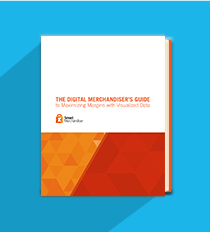
Before the days of eCommerce, retail store managers knew much less about their customers than today’s digital merchandising managers.
Thanks to advances in technology, digital merchandising managers are now able to track how much an average customers spends, how often customers visit an online store and leave without making a purchase, and how much an individual customer spends over the course of a year, among other data points.
This data makes it easier for marketers and merchandisers to break down the sales process into phases and to customize the shopping experience for individuals based on their habits.
In turn, merchandisers who put in the time to understand their customers and deliver a better online shopping experience are rewarded with more repeat business and higher sales numbers.
Here are seven of the most important metrics merchandisers can use to structure their online merchandising strategies.
Cost of acquiring a new customer (CAC)
The cost of acquiring a new customer (CAC) is the measurement of how much money a company must spend, on average, through marketing and other means to obtain one new customer. This metric defines the amount of money spent throughout the acquisition phase. The lower the CAC, the higher the profit margin.
For example, if an organization spends $500 on Google Adwords, banner ads, blogging, Facebook-promoted posts and Twitter-related advertising in order to earn the business of five new customers, the CAC is $100.
Strategic marketers are constantly analyzing this number to identify the most impactful marketing tactics for their brands while ultimately reducing the cost associated with acquiring new customers.
Cost Per Acquisition (CPA)
Cost per acquisition (CPA) specifically measures how much an affiliate marketer is paid to refer new customers to a site. It is different from the CAC, although both refer to how much it costs to obtain a new customer.
Conversion Rate (CR)
The conversion rate (CR) directly affects a store’s revenue. It is a measure of how many site visitors end up becoming customers. For example, if 100 unique users visit a website and 11 make purchases, the store’s conversion rate is 11%.
Using organized and intuitive inventory tagging, compelling photography and engaging color arrangements are some of the most effective ways merchandisers can increase conversion rates.
Shopping cart abandonment
When a conversion rate is lower than desired, the first metric a merchandiser can look into is the shopping cart abandonment rate. This rate tallies up all instances when a web visitor puts items in their shopping cart, but ends up leaving the site without making a purchase. A high shopping cart abandonment rate indicates a lost sale, but more specifically it indicates an opportunity to improve site design, copy and/or a site’s users’ overall experience.
Average Order Value (AOV)
The average order value (AOV) is the average amount of money each customer spends on a site. This metric plays a large factor in determining how many customers a merchandiser must attain in order to be profitable.
Churn
Churn refers to a lack of return business and indicates how many customers are not likely to return to the store again to make another purchase. A high churn rate can be an indication that the customer service efforts or web experience of a company needs improvement, or that customers were not satisfied with their purchase.
Customer Lifetime Value (LTV)
The lifetime value (LTV) of a customer equals the estimated average of how much that customer will spend over the course of his or her relationship with a store. This number assists marketers with determining how much they can spend on the acquisition of a new customer. A higher LTV translates into a marketer being able to spend more money at the outset when attempting to acquire the customer. This infographic illustrates how to calculate an LTV.
While paying detailed attention to these metrics requires extra effort, it’s also the fastest route to improved conversion rates. By understanding how customers behave online and how to appeal to them, merchandisers have the opportunity to increase the success rates of their strategies.
For more tips on how to turn your online store into a revenue-generating machine, read more on how to optimize the visual appeal of your merchandise.
Improving profit margins is at the top of all eCommerce merchandiser’s to-do lists which is why we’ve created The Digital Merchandiser’s Guide to Maximizing Margins with Visualized Data eBook.
Download the eBook to learn more!


